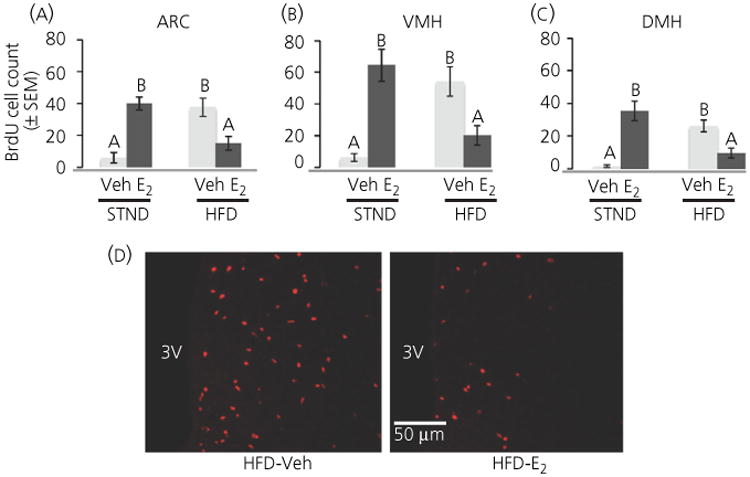Fig. 5.

The number of newly born cells in the adult female mouse was affected by both diet and hormone treatment. (a–c) Number of 5-bromo-2′-deoxyuri-dine (BrdU)+ cells in the arcuate nucleus (ARC), ventromedial nucleus of the hypothalamus (VMH) and dorsomedial nucleus of the hypothalamus (DMH). A high-fat diet (HFD) increased the number of BrdU+ cells in the ARC, VMH and DMH, whereas oestradiol (E2) treatment suppressed this HFD-induced increase. Conversely, E2 increased BrdU cell number in female mice on a standard (STND) diet. (d) Photomicrographs of BrdU in the ARC. A HFD increased cell proliferation in the ARC (left), whereas oestradiol administration inhibited this effect (right). Light bars, vehicle-treated; dark bars, E2-treated. Different letters indicate significant differences between groups (P < 0.05). 3V, third ventricle.
